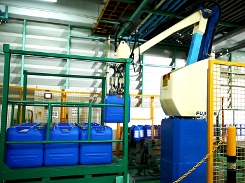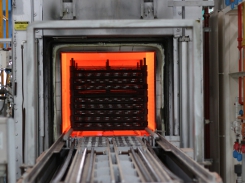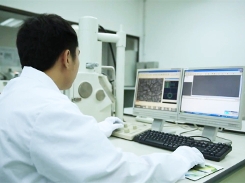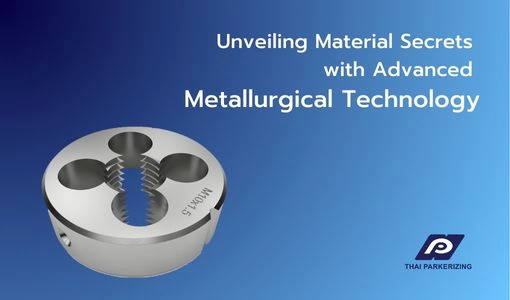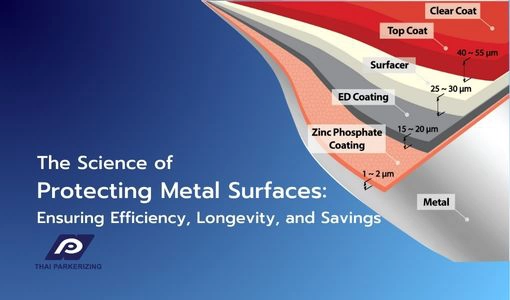- Corporate
- Chemical Products
- Chemical Controller
- Chemical for Paint Booth
- Coil Coating
- Degreasing and Cleaning chemical
- Heat&Cool exchanger (PLATECOIL)
- Hydrophilic
- Manganese Phosphate
- Nano-coating (Pallucid)
- Rolling Oil
- Rust Preventive Product
- Stearate Soap Lubricant/Dry-in-Place Lubricant (PULS)
- Trivalent Chromium/Non-Chromium
- Zinc Phosphate/Iron Phosphate
- Processing Services
- Laboratory Services
- Articles
- What's New
- Contact Us
- Privacy Policy
7 surface hardening methods you should know
14 May 2024
Hardening is a crucial technique in various metal industries, particularly for steel. The primary objective of hardening is to increase the hardness of the metal, thereby enhancing its durability.A thorough understanding of the concept of hardening and its seven techniques empowers individuals to make more informed decisions when selecting heat treatment services from experts.
What is meant by hardening, especially in the context of metals?

Hardening is a heat treatment process applied to metals, such as steel, to enhance their hardness and resistance to wear and abrasion. The process involves heating the metal to a temperature where it transforms into austenite. This austenitic structure is then held at temperature to ensure uniformity throughout the workpiece. Finally, rapid cooling (quenching) or at a critical cooling rate is applied, resulting in a martensitic or bainitic microstructure, depending on the desired properties.
Key factors influencing the hardening process include:
- Carbon content: In steels with higher carbon content, the formation of martensite is increased. Additionally, alloying elements such as molybdenum, chromium, and nickel can improve hardenability by lowering the critical cooling rate.
- Cooling rate: The cooling rate must be greater than the critical cooling rate. Other factors affecting the cooling rate include the surface condition of the workpiece, the quenching medium, and the size of the workpiece.
How does case hardening benefit a product?

-
Enhancing Strength and Durability
Heat treatment is beneficial in increasing the strength and durability of metals, especially steel. This significantly enhances the performance of the material. -
Friction Resistance
Friction is a common occurrence with various materials, especially steel, which is a primary component in many tools, machinery, and automotive bodies. Heat treating steel enhances its resistance to wear and tear caused by friction, such as abrasion, impacts from hard objects, or sharp edges.
What are the different methods of surface hardening?

Having understood the basic concept and benefits of metal hardening, let's delve deeper into the various techniques employed in this process. Here are seven commonly used methods for surface hardening:
-
Quenching and Tempering:
This involves heating the metal to a specific temperature followed by rapid cooling. While this process results in a hard outer surface, the metal can become brittle. To mitigate this, a tempering process is introduced to reduce internal stresses and improve toughness. -
Annealing:
Annealing is a heat treatment process that softens metals by reducing hardness, making them easier to form or shape. However, this process also enhances the metal's ductility to prevent damage during subsequent operations. -
Case Hardening:
In this technique, a low-carbon steel is heated in the presence of a carbon-rich substance. This process results in a high-carbon surface layer that is harder and more wear-resistant. Common methods include gas carburizing and gas carbonitriding. -
Nitriding:
This involves exposing the metal to ammonia gas at a high temperature. Nitrogen atoms diffuse into the surface, forming hard nitrides. This process is particularly suitable for improving the surface hardness and wear resistance of steels. -
Flame Hardening:
This technique uses a flame to heat the surface of the metal to a critical temperature, followed by rapid cooling. It is commonly used for steels with a carbon content of 0.4-0.6%. -
Induction Hardening:
This method uses electromagnetic induction to heat the surface of the metal. The rapid heating and cooling cycle results in a hardened surface layer. -
Precipitation Hardening:
This involves creating a supersaturated solid solution and then inducing the precipitation of fine particles within the matrix. This process significantly increases the strength of the alloy

Looking to enhance the strength and durability of your steel components? Thai Parkerizing provides cutting-edge hardening solutions. Our seven proven techniques, combined with our expert team, deliver superior results. Experience the difference of working with a leader in surface treatment technologies. Contact us today.
Related products
Tag :


